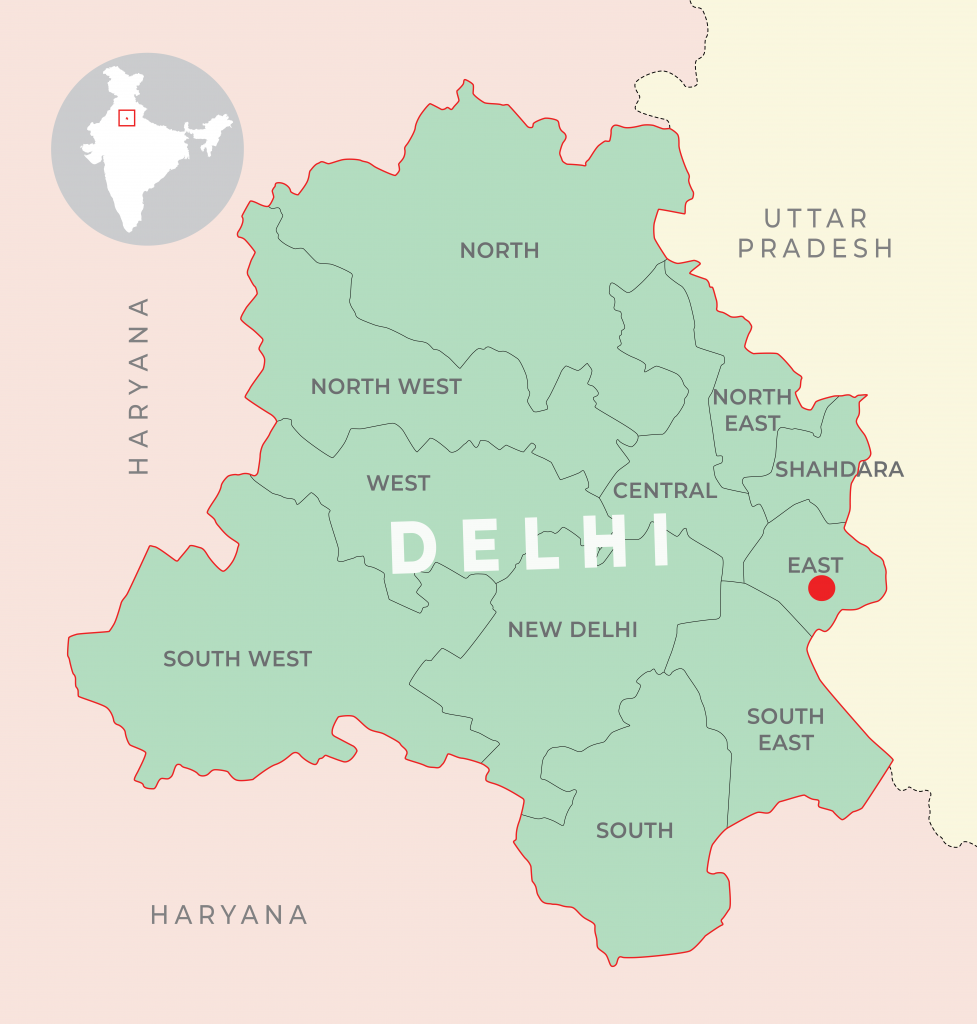East Delhi, India

East Delhi, covering about 64 square kilometres, is one of the 11 administrative districts of the National Capital Territory of Delhi, India.
As per the Census of India (2011), it has a population of 1,709,346 and a literacy rate of 89.31%. The district is entirely urban, characteriszed by high population density and a dynamic metropolitan lifestyle. Children aged 0-6 years comprise 194,452 individuals, accounting for 11.4% of the population.
Healthcare
Public healthcare infrastructure includes a network of dispensaries, Primary Urban Health Centres (PUHCs), and tertiary care hospitals such as Chacha Nehru Bal Chikitsalaya and Lal Bahadur Shastri Hospital.
The district’s health system is managed by the Department of Health & Family Welfare, Government of NCT Delhi, and delivers immunisation, maternal and child health services, and nutrition programmes through the National Health Mission.
Culture, economy and politics
Socially, East Delhi is a melting pot of cultures, with residents from diverse regions of India speaking languages like Hindi, Urdu, Punjabi and Bengali. Economically, the area is supported by retail trade, small enterprises, informal labour and bustling markets like Laxmi Nagar.
Politically, the district is divided into three subdivisions and is represented by six Members of the Legislative Assembly (MLAs) and one Member of Parliament (MP). Governance is overseen by the Municipal Corporation of Delhi (MCD).
More about NAMASTE’s work in East Delhi
NAMASTE’s activities in East Delhi are led by Sangath, an organisation adopting an integrated, participatory approach to mental health. Sangath partners with communities, health systems, and individuals to collaboratively design and deliver support at every stage of life. Sangath has established a collaboration with the Department of Women and Child Development to implement NAMASTE.
See more information on the Sangath website.
